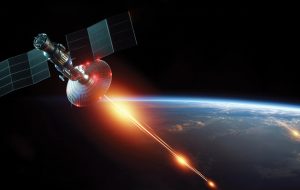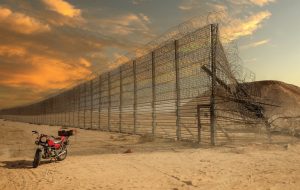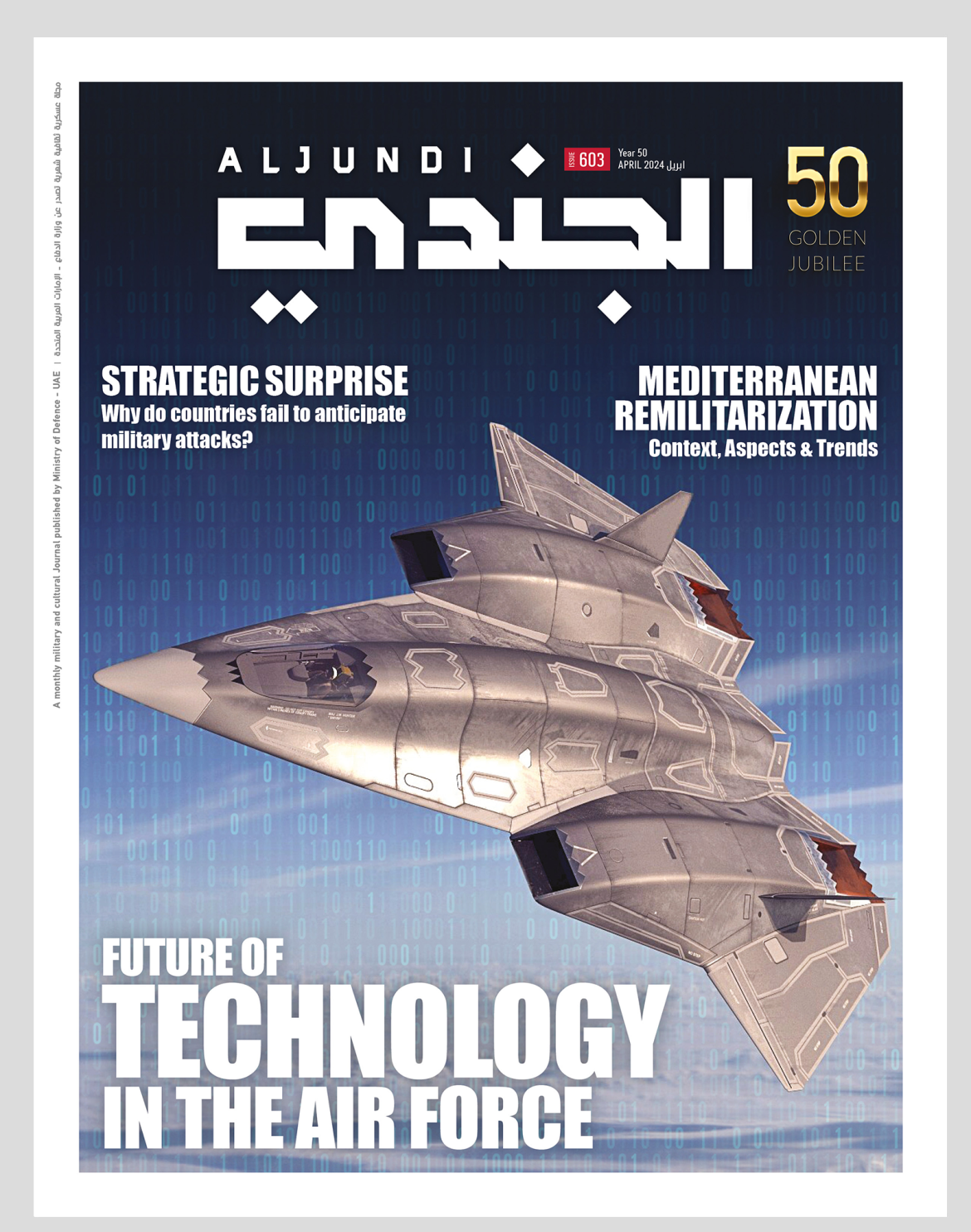For the first time in its history, France conducted military exercises in space in cooperation with its European partners such as Germany and Italy, in addition to the United States. These exercises, called “Aster X”, took place in March 2021, and were virtually attended by French President Emmanuel Macron. Military and civilian institutions participated in them as part of an integrated exercise in order to defend space against virtual enemies that threaten French interests. These exercises were mainly aimed at assessing the ability of France and its allies to protect its satellites.
This French move represents the latest manifestations of international fears of the increasing trend towards the militarization of space, the threats it could represent, and how to prepare to confront such threats, especially in light of the increasing global dependence on space technology in various developmental and life issues, the things which our topic will try to shed light on through the following themes:
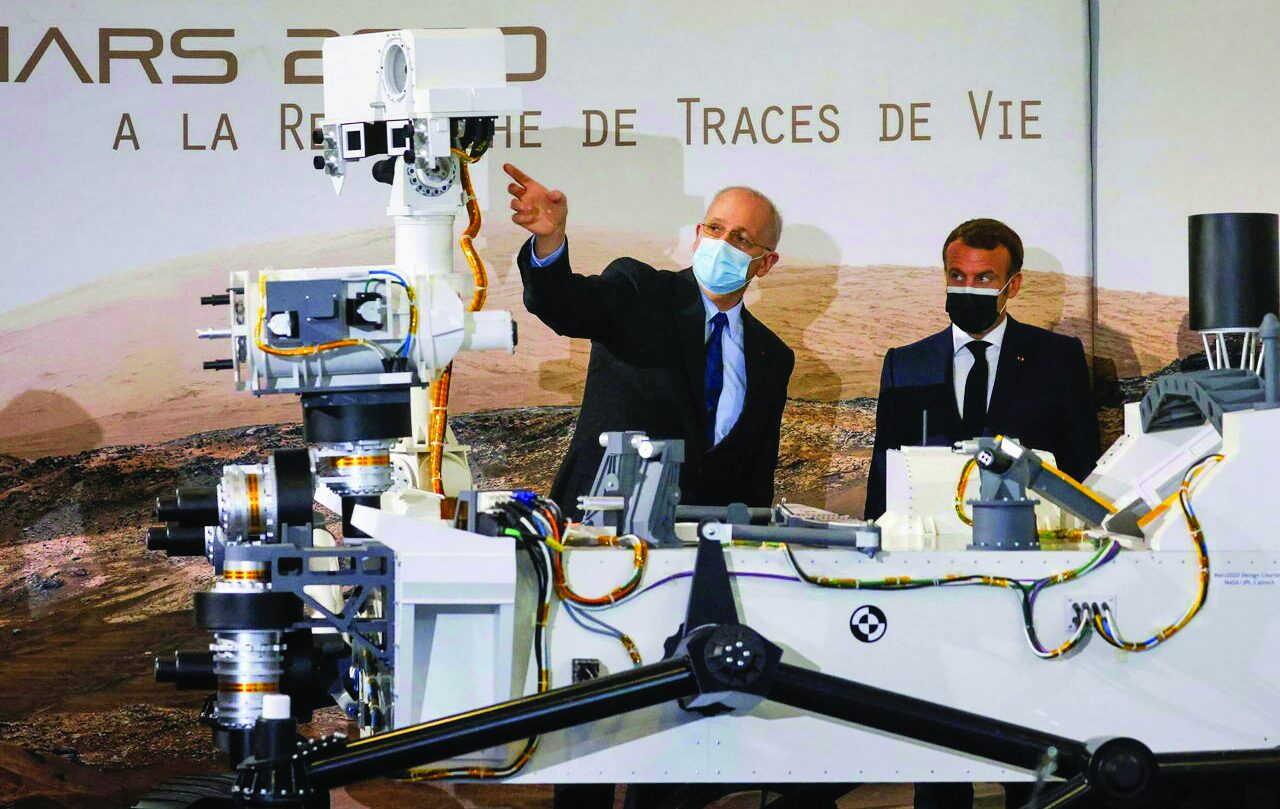
First – the significance of the French step:
The French move has several important connotations, including:
The growing view of space as an arena for military competition between international powers and as a tool of future wars for states, and therefore it is necessary to prepare to deal with all scenarios presented in this regard. The Minister of the French Armed Forces, Florence Parly, expressed this view in a dialogue last year, during which she stressed the need to “transfer from the view of space as a common property in the service of science, to a space in which powers are still competing for global dominance.” Also prominent here is the statement of the French Air Force Chief of Staff, General Philippe Lavigne in October 2018, in which he said: “If we lose the space war, we will simply lose the war.”
The multiplicity of sources of the military space threat and the necessity of proactive planning to confront them, which can be discerned from the broad objectives and the multiple scenarios on which these exercises focused. These virtual exercises are based on confronting 18 imagined scenarios in space, including an imagined scenario of a crisis between a country with space capabilities and another country that has a joint defense treaty with France, according to which France finds itself in a war space in which more than ten thousand targets move, and threaten to penetrate the French airspace. This also includes a hypothetical scenario in which an enemy state hits a French satellite or satellite debris falls on French soil threatening the civilian population. The maneuvers also included checking the defense systems of France and its allies, which can respond to threats targeting it from a distance of more than three thousand kilometers.
France’s keenness to consolidate its position within the map of the dominant powers in space. These exercises are part of a French strategic plan aimed at developing French military space capabilities in a context in which space has become an arena for fierce competition between major international powers. This reflects France’s desire to find a foothold in the vast space, a desire that has been reflected in the series of measures taken by Paris in the last few years; in 2019, French President Emmanuel Macron announced the establishment of a military command dedicated to space in the form of a new organizational structure within the French Ministry of Defense and armies, which would have total control over space military operations and confront the dangers that might threaten the French system related to satellites in space. Consequently, the name of the Chief of Staff of The French Air Force was changed to the Chief of Staff of the Air and Space Force, a term that defines new frontiers. France also sets an annual budget of two billion euros dedicated to military and civil space issues, and despite the importance of this budget, it is still far from the leading powers of the scene, namely: the United States (50 billion dollars), China (10 billion) and Russia (4 billion), according to French government figures.
These exercises reflect a greater desire on the part of France to enhance its independence and leadership position in strengthening its space presence. After France was only participating as a guest country in the space military exercises led by the United States of America, this time it led the space training from a military base in the city of Toulouse. These exercises are the first of their kind to be held on European soil, and come at a time when there is much talk about the importance of Europe building its independent military capabilities.
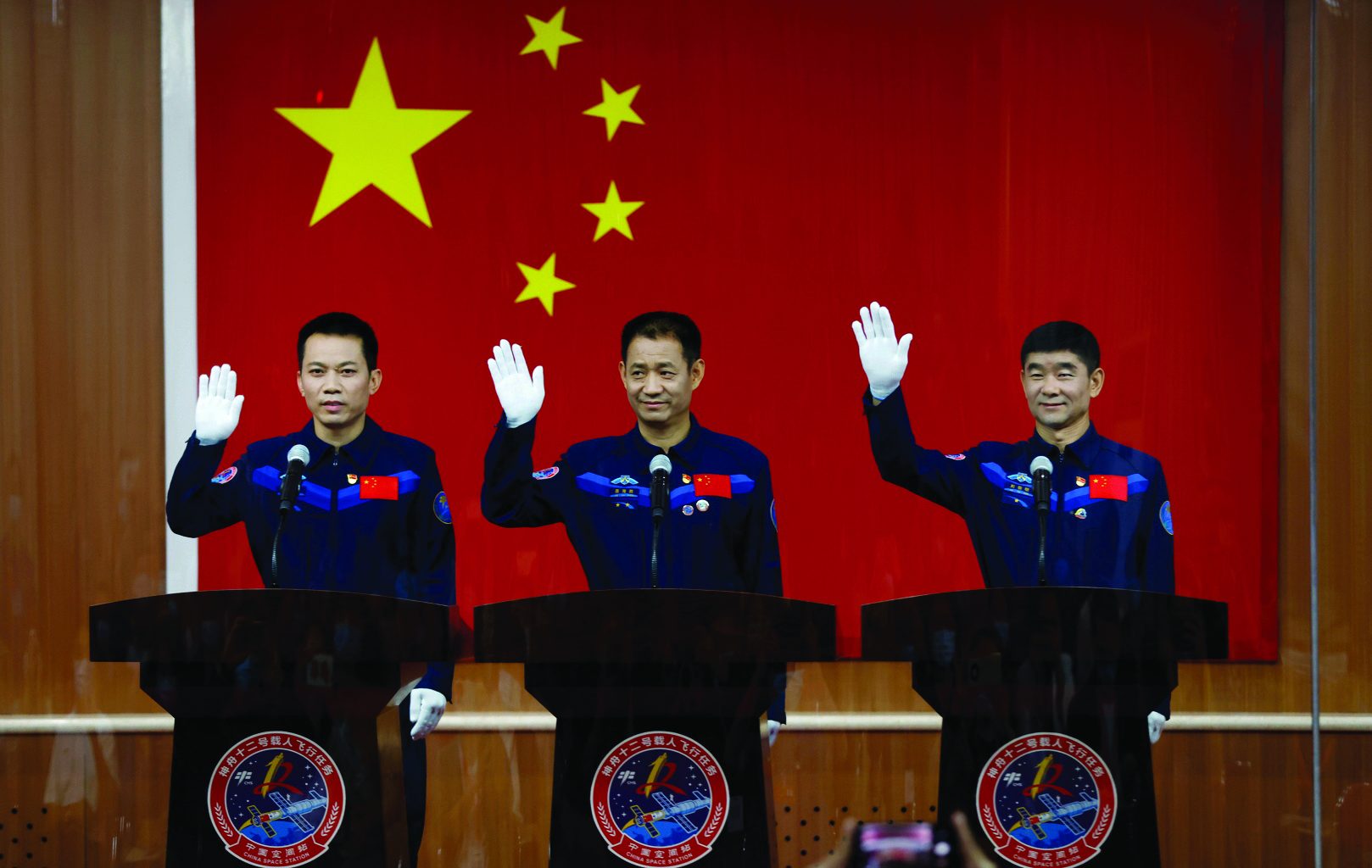
Second – Manifestations of the growing trend towards militarization of space:
Talking about the militarization of space is not new, but dates back to the eighties of the twentieth century when former US President Ronald Reagan launched the “Strategic Defense Initiative” or “Star Wars”, a program to develop a missile defense system that relies on the latest technologies to thwart any attack on the United States with ballistic missiles. A budget of 26 billion dollars was allocated to accomplish this goal. In response, the Soviet Union developed a program called “Satellite Killer” that was successfully tested when the Tsircon 2 missile succeeded in destroying an interceptor spacecraft. In September 1985 the United States launched an anti-satellite missile from an F-15 fighter plane that succeeded in destroying its Soloved satellite. As for China, it conducted the first tests of its anti-satellite missiles in 2005, and in January 2007 it succeeded in destroying its decommissioned FY-1C spacecraft using a ground-based anti-satellite missile.
In recent years, the trend towards the militarization of space by international powers has grown under the pretext of protecting strategic interests after the increasing importance of space and its use in various development fields. In September 2019, former US President Donald Trump announced the establishment of the US Space Command to be the operational arm of the US military in space, and during the inauguration ceremony, Trump described space as the newest arena of war in the world, and defined the mission of this space command to “help deter aggression and control space.” In April of the same year, India joined the group of countries capable of launching a satellite into space by using a missile, and Indian Prime Minister Narendra Modi described his country as a major space power after the success of its satellite test using its missile defenses. In July 2020, the US Space Command confirmed that it had “evidence” that Moscow had conducted a “non-destructive test of an anti-satellite weapon in space.”
In 2019, China became the first country to send an unmanned vehicle to the far side of the moon. As a result of the success of the mission, called “Chang 5”, China became one of three countries to obtain materials from the moon, and the first country to do so in the past 40 years. In March 2021, China and Russia agreed to establish a joint space station on the Moon. Two months later, China became the second country to put a spacecraft on Mars. In June of the same year, China sent its first three astronauts on its first manned mission in nearly five years. Beijing aims to become a major power in space by 2030.
Since 2005, more than 20 tests of anti-satellite weapon systems (ASAT) have been conducted in space by four different nations, an average test not seen since the 1960s.
This growing trend towards the militarization of space is fueled by a number of important factors, most notably:
1 The state of raging competition between the major international powers to dominate space, and the crisis of confidence between these countries towards each other’s intentions. Among the most prominent indications of this are the mutual accusations between these powers of enhancing their space military capabilities, and the warnings issued by the US intelligence agency that China and Russia are developing “strong and capable” space services to carry out intelligence, surveillance and reconnaissance activities, and Chinese and Russian accusations of the militarization of space after the US established The “Space Force” branch as the sixth branch of its space forces, and the French and Western accusations against Russia of spying on the French satellite “Athena-Fidus” in 2017.
2 The increasing number of regional and international powers that possess advanced missile technologies and have the ability to target satellites in space, or those that seek to possess them, in addition to the development of technologies used in spy satellites, all of which pose a threat to the capabilities of major space powers.
3 The increasing importance of space in the sustainable development process. Developments in the space sector have become an essential component in the process of the knowledge revolution and technological applications that humans use in various areas of their lives, starting with high-speed internet networks, remote sensing and modern communication systems that facilitated communication between humans. Many innovative applications depend on it, such as the Global Positioning System (GPS) and the Internet of Things, and a lot of new development activities such as tourism to travel to outer space, and trying to take advantage of the natural resources available in outer space, and many other benefits and development advantages provided by this advanced technology to serve mankind.
As a result, global investments in the field of space have witnessed a significant acceleration in recent years. Some published statistics in this regard indicate that these investments have doubled by about 16 times in 2019 compared to what they were in the first five years of the current millennium; It rose from about one billion dollars during the period from 2000-2004 to reach 3.35 billion dollars in the years from 2010 to 2014, before reaching about 16.84 billion dollars during the period from 2015-2019.
The growing number of countries investing in space exploration, as about 90 countries in the world have launched satellites for various purposes, and more than thirty countries have national space agencies today, which some international powers fear will affect their dominant position in the global space race.
The critical importance that space has become in the field of achieving the military superiority of states, whether in the field of intelligence gathering and positioning, or directing weapons and jamming or directly targeting satellites, disrupting communications, espionage from space and many other critical tasks and roles that can be invested in space to achieve military hegemony on Earth and in space.

Third – Preparing for scenarios of space wars and how to avoid them:
There is wide agreement among military researchers and experts that space war has become inevitable, and that it is only a matter of time, and there are even those who talk about that this war has already begun at lower levels, such as jamming satellites and spying on each other. Hence, many countries of the world began to think about how to prepare for these future wars. These preparations are carried out through two main methods:
The first: military exercises and virtual simulation systems, for example, the space military exercises conducted by France in March 2021 with the participation of other Western countries, as was explained.
The second: the development of strategic weapons that can target, destroy and jam satellites, including long-range missile systems, jamming devices, and cyber-attacks targeting satellites and ground stations that control them, or using lasers to disable satellites, and even the use of satellites in direct military operations (space-to-ground), and other weapons that countries are currently developing.
But the central question here is how to avoid these destructive scenarios, and encourage tendencies to view space as an arena for constructive cooperation in the field of peaceful uses in a way that serves all humanity.
The first step begins with working to remove the causes of mistrust in the attitudes and positions of the major international powers themselves, and this seems ideal, because the competitive nature is ruling and dominating the relations of these international powers, especially the United States and China.
The second step is to establish legal rules regulating the peaceful uses of space that prevent any manifestations of the militarization of space. The current international legal framework appears to be largely permissive, at least implicitly, toward the development, testing and deployment of space military capabilities. The Outer Space Treaty of 1967 did not prohibit the placement of nuclear weapons or any other type of weapons of mass destruction in outer space. There are generally no specific restrictions to testing or deploying non-nuclear weapons in space. While it is generally accepted that the Charter of the United Nations applies to space activities and thus prohibits aggression in space just as it is prohibited to attack on Earth, there is no consensus on what constitutes a use of force or an armed attack against space capabilities. On the other hand, there is no international consensus about the rules of conduct for conducting military activities in space during peacetime, including proximity to other satellites, and the permissible threshold for launching a legitimate armed response as a form of self-defense. In addition, there is ambiguity about what can be considered a legitimate military target during the conflict, and other legal problems that need to strengthen the international legal framework to ensure the prohibition of the militarization of space.
The third step is to promote international moves that aim at more international cooperation in the field of peaceful uses of space in a way that achieves a profit for all parties.
The world’s blazing conflicts on Earth should not be transferred to the vast space, and instead of thinking about preparing for space wars, countries should think about how to cooperate and jointly benefit from the enormous capabilities that space provides for various development fields, and here the voice of wisdom seems more than important.
By: Dr. Fattouh Heikal
(Research Director – Trends Research and Consulting)




